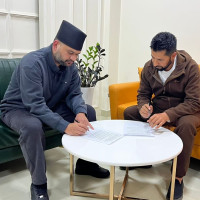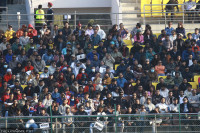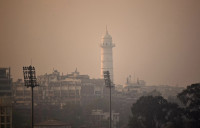Opinion
Canonising literature
With Devkota, Upadhyay, and Joshi, Nepali literature in English has now achieved canonical status
Min Pun
In any discourse on Nepali literature in English, the first question that strikes is whether this emerging body of literature has achieved canonical status or not. The answer is in the affirmative.
When we begin to compare Nepali literature in English with Western literature, a question like ‘Can Nepalis write in English?’ need not be asked. What is the nature of such writing? Where does it fit into the larger spectrum of Nepali literature and culture? What is its relationship with mainstream English literature in general and with Nepali literature in particular?’ Debates and questions such as these around Nepali literature in English and the literary canon need to continue to take place in academic circles.
The beginning
The beginning of English writing in Nepal can be traced six or seven decades back. In the 1950s, Laxmi Prasad Devkota started writing literature in English. At that time, Nepal had just emerged from a century of isolation. English education was restricted to a certain group of elites and they were not very interested in English writing. It was in 1959 that English was added to the higher education curriculum and even until the late 1980s, most English literary works in Nepal were translated texts; only few brave Nepalis tried their hand at creative writing in English.
Nepal saw tumultuous political and social changes since the 1960s, most dramatically in the 1990s. The turmoil continues, as the country struggles to write a new federal constitution that reflects the emerging interests of a majority of Nepali people. How has literature written in the English language reflected these changes? For instance, the 1990 literary movement contextualised the question of canon in Nepali literature in English.
The post-1990 period is the starting point for a new generation of Nepali writers in English. Two great writers emerged during this time—Samrat Upadhyay and Manjushree Thapa, who attracted global readership. The most important works are the publication of Upadhyay’s Arresting God in Kathmandu (2000) and Thapa’s The Tutor of History (2001), both of which earned international success upon their release. Thus, Upadhyay and Thapa paved the way for Nepali writers to follow in their footsteps.
Many writers, including poets, dramatists, essayists, and biographers, have since published works with new possibilities for readers and prospective writers. With many writers publishing new books, the corpus of Nepali English literature has rapidly expanded its horizon. Upadhyay and Thapa were followed by other young Nepali writers, such as Sushma Joshi, Rabi Thapa, Sheeba Shah, Rajan Pokharel, Ammaraj Joshi, and Sachendra Manandhar.
Nepal possesses many talents in the field of English writing. Despite its short history, Nepali English literature has gained maturity, especially considering that the usage of English language has a brief history in Nepal. Nepali literature in English has managed to arouse considerable interest both within Nepal and abroad.
A question of canon
Apart from Devkota, Upadhyay and Thapa, writers like Abhi Subedi, Padma Prasad Devkota, Mani Dixit, DB Gurung, Tek Bahadur Karki, Laxmi Devi Rajbhandari, and Sanjeev Uprety are among the ones who have produced literary works in English for a global readership. They also provide a serious case for the discussion of whether Nepali literature in English has attained canonical status.
Today, Nepali literature in English has begun to function in the universal canon, like the Western canon, when international publishers started accepting works by Nepali writers. They could easily be documented at length, namely the extent to which the presence of Nepali writers in English in western markets on who gets published or translated, what and how well, and when. For instance, Upadhyay and Thapa are well known in Western academic circles and well liked because of their regular presence there. Most Nepali readers would react to this list with astonishment. But why include other Nepali English writers in the canon? Of course, they are unquestionably good poets, novelists, essayists, and dramatists, but the question is, do they really deserve a place among the greats of Nepali literature in English: Devkota, Upadhyay and Thapa?
English literary writing is thriving in Nepal. It is important to study these works and initiate academic discourse on how and at what points English literature produced in Nepal diverges from other English literature in the world. Devkota is undoubtedly one writer to be mentioned as canonical. There are many reasons for this, one of them being his inclusion on university syllabi. Upadhyay and Thapa too considered canonical as they have been internationally acclaimed and their works have found global readership. In addition, they should be considered great authors in terms of their writerly qualities and thematic presentation.
However, the debate over canonisation will continue to take place in academic discourses. Even if the literary canon as such does not exist, we can all recite the names on the list.
Pun teaches and researches on topics related to Nepali writings in English ([email protected])




 15.12°C Kathmandu
15.12°C Kathmandu









%20(1).jpg&w=300&height=200)

